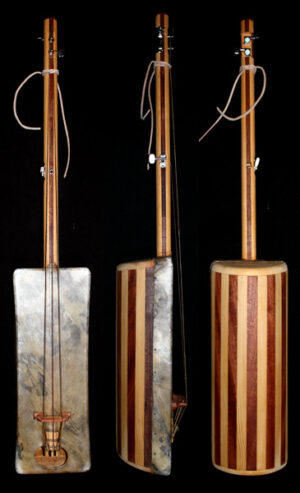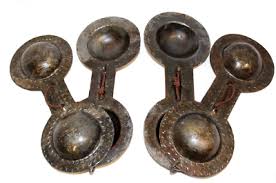Sacred Instruments
The Voices of Ancestral Spirits
The Musical Tools of Spiritual Healing
Gnawa instruments are more than mere musical tools—they are sacred vessels that channel ancestral energies and facilitate spiritual healing. Each instrument has a specific role in the ceremonial ensemble, creating a powerful sonic landscape that enables trance and transformation.
Hajhouj (Guembri)
The hajhouj, also called guembri or sintir, is a three-stringed skin-covered bass lute that forms the soul of Gnawa music. Made from hollowed wood covered with camel skin and adorned with goat gut strings, it produces deep, resonant sounds that connect the earthly and spiritual realms. The maalem (master musician) uses this instrument not only to create hypnotic melodies but also to call forth specific spirits during healing ceremonies.
Qraqeb (Krakebs)
Qraqeb are large iron castanets that produce the distinctive metallic rhythm central to Gnawa music. Played in pairs (one in each hand), these heavy metal clappers create the driving, trance-inducing patterns that form the backbone of every Gnawa performance. The complex, polyrhythmic patterns played on qraqeb require significant skill and endurance, as musicians often play continuously for hours during traditional ceremonies.
Tbel
The tbel is a large double-sided drum played with curved sticks. Used primarily in processions and the opening phases of Gnawa ceremonies, it creates powerful, resonant beats that announce the beginning of spiritual work. The tbel player uses various techniques to produce different tones and rhythms that complement the hajhouj and qraqeb, adding depth and energy to the ensemble.
The Sacred Ensemble
When played together, these instruments create a powerful musical conversation. The hajhouj provides both melody and bass, the qraqeb maintain the trance-inducing rhythm, and the tbel adds ceremonial weight and energy. This combination has remained largely unchanged for centuries, preserving an ancient musical tradition that continues to move souls and bodies today.


